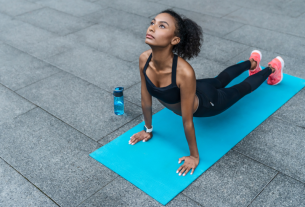Answering the most commonly asked questions about SPF. Continue reading to find out what SPF stands for, what rating is the best for Summer outings and more!
What does SPF stand for?
SPF stands for Sun Protection Factor, which measures a sunscreen’s ability to protect your skin from harmful UVB rays.
What SPF is best for going outside during Summer?
For summer outings, it’s essential to wear sunscreen with a high SPF rating, ideally 30 or higher, to shield your skin from sunburn and reduce the risk of skin damage and skin cancer.
Instead of solely relying on higher SPF, consider other factors like the sunscreen’s broad-spectrum coverage (protects against UVA and UVB rays) and water resistance, which can also impact its overall effectiveness in providing sun protection.
Is applying more of a low SPF sunscreen the same as wearing a higher SPF?
Applying a low SPF sunscreen often does not provide the same level of protection as wearing a higher SPF sunscreen. The Sun Protection Factor (SPF) indicates the level of protection a sunscreen offers against UVB rays, which are responsible for sunburn. While reapplying sunscreen is essential for maintaining protection, it doesn’t significantly increase the SPF’s effectiveness.
For example, if you wear an SPF 15 sunscreen and reapply it every two hours, you will still have the protection of an SPF 15 sunscreen throughout the day. It won’t be the same as wearing an SPF 30 sunscreen from the beginning.
The higher the SPF the more sun protection, right?
It’s generally recommended to choose a higher SPF sunscreen (SPF 30 or higher) to get better initial protection and then reapply it regularly to maintain that level of protection. This helps reduce the risk of sunburn and skin damage caused by UV radiation.
Higher SPF does provide better protection against UVB rays, but the difference is not as significant as the SPF number might suggest. An SPF 30 sunscreen filters out approximately 97% of UVB rays, while an SPF 50 sunscreen filters out around 98% of UVB rays. The higher the SPF, the slightly more protection it offers, but it’s not a linear increase.
What is the highest SPF rating?
Besides applying sunscreen, what else can protect skin from the sun?
Wearing lightweight, loose-fitting clothing with tightly woven fabric can also help protect your skin from the sun’s rays while keeping you comfortable in the summer heat. Don’t forget to wear a wide-brimmed hat and sunglasses for extra protection for your face and eyes.


